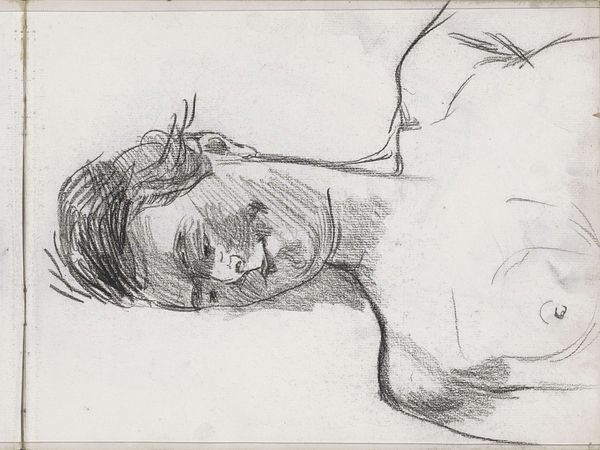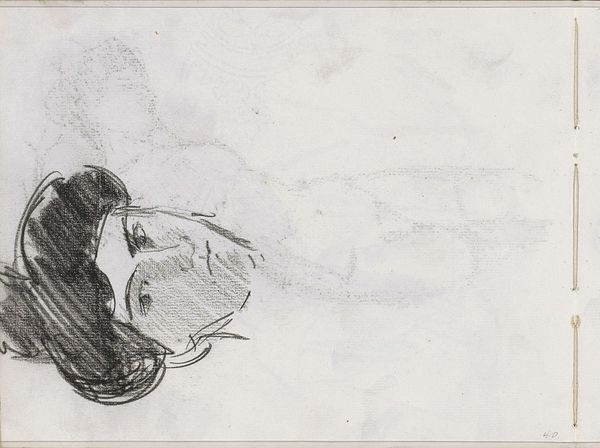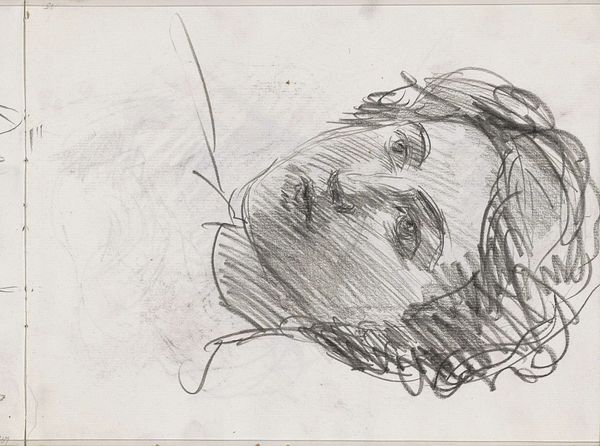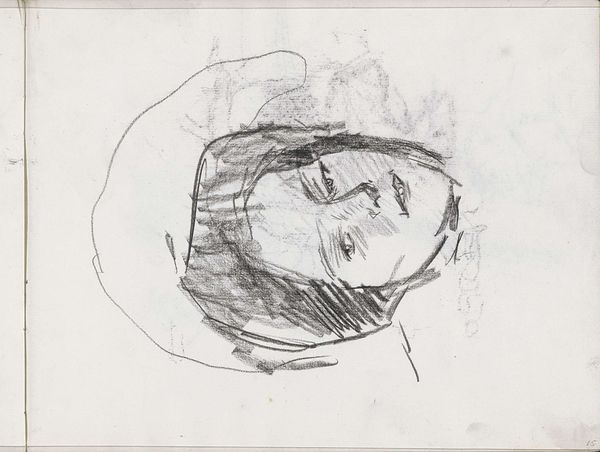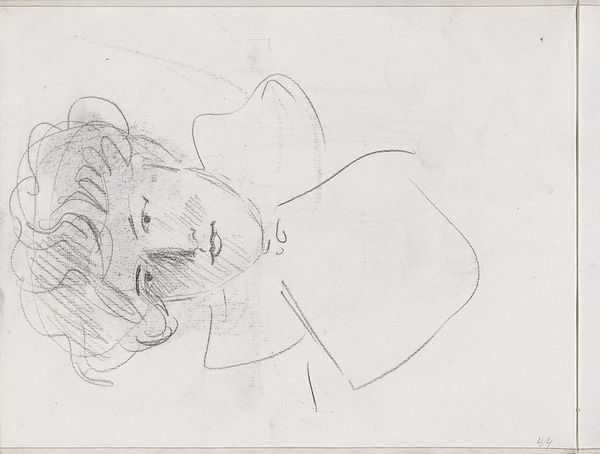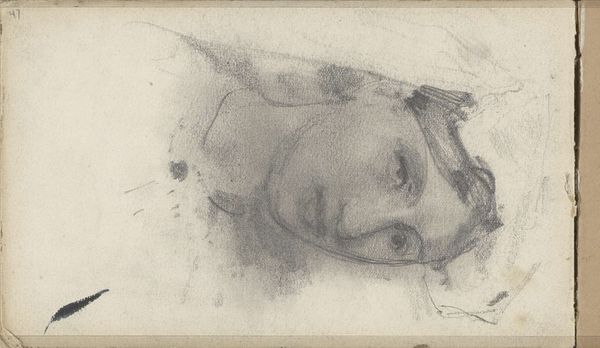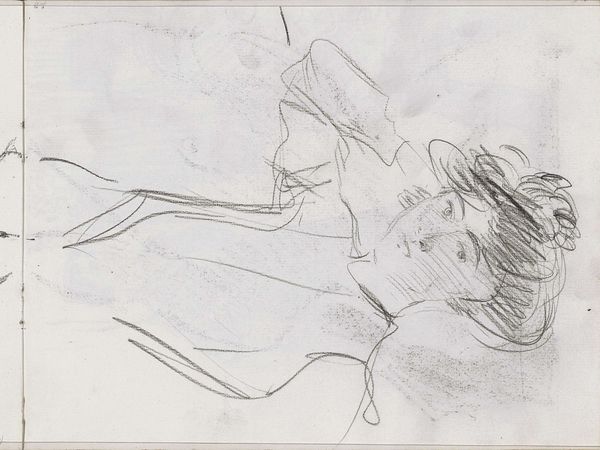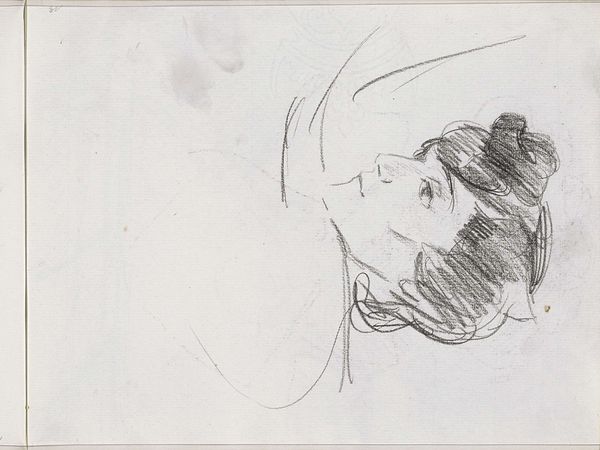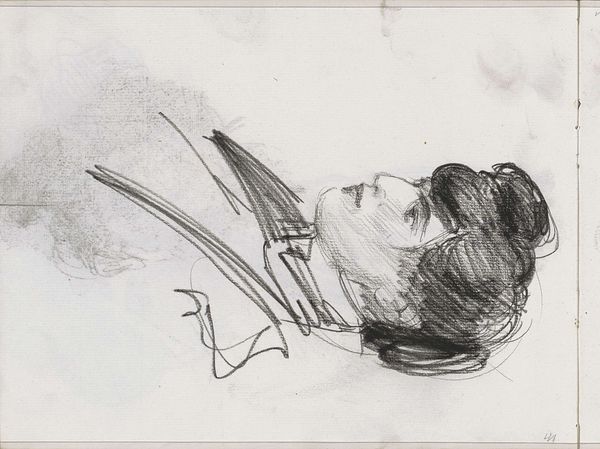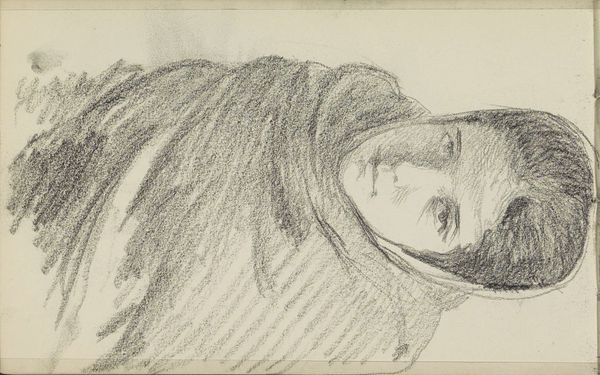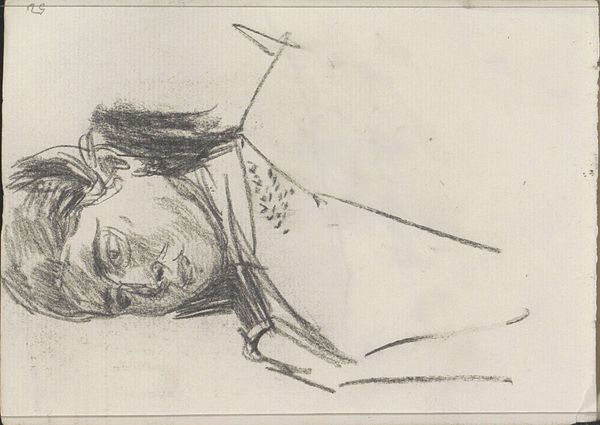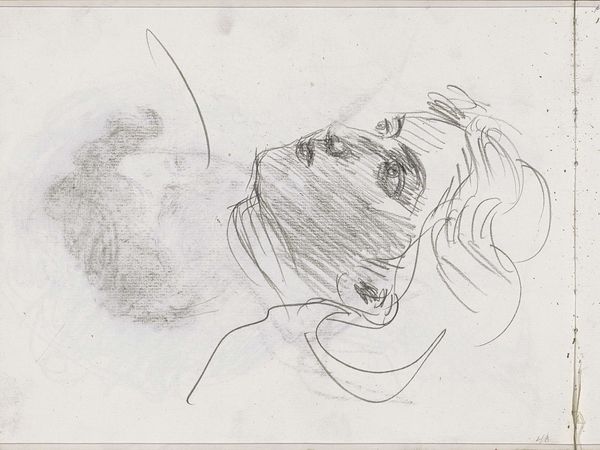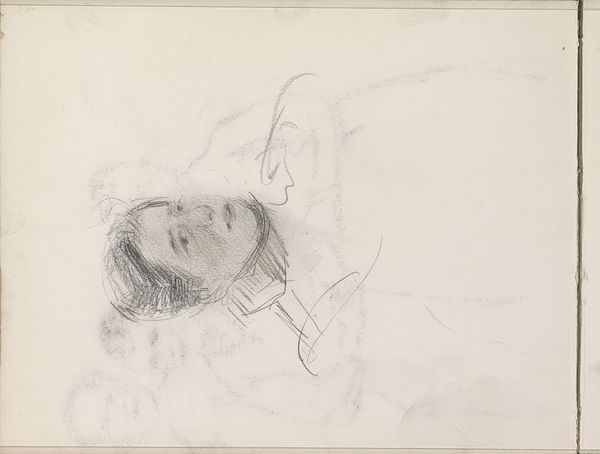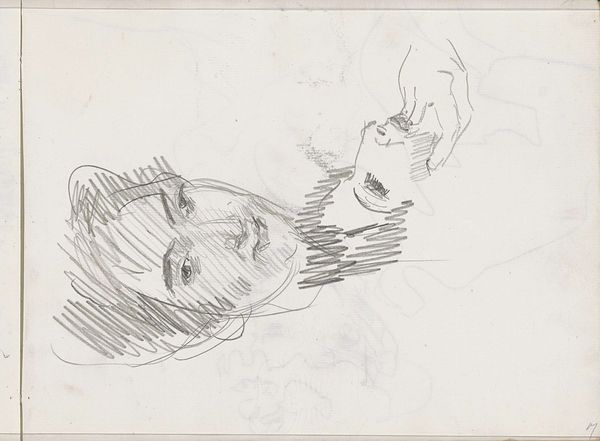
Copyright: Rijks Museum: Open Domain
Curator: Here we have a pencil drawing, simply titled "Vrouwenhoofd," or "Head of a Woman" by Isaac Israels, thought to have been created sometime between 1875 and 1934. Editor: It feels very immediate, doesn't it? Almost like a fleeting impression captured right on the page. The loose lines give it such a sense of movement, as though she's about to turn away. Curator: That immediacy aligns perfectly with the social context Israels was operating within. He aimed to capture modern life and portray everyday moments. Israels was less concerned with academic polish than he was in capturing the essence of a moment, a feeling. Editor: Look at the contrast between the detailed rendering of her face and hair, compared to the vague, smudged background. It really brings her forward, emphasizes the texture of the paper itself. I'm curious, what pencils do you think he might have used, and where would he have bought them? I wonder if we have records about what artists in Amsterdam purchased at that time? Curator: Those details would certainly provide an even deeper insight, but his looser, sketch-like technique, evident in works like this, challenged traditional notions about the artist’s hand being precise. The unfinished aspect feels deliberate, doesn’t it? Editor: Absolutely. And it asks us to participate in the completion of the piece, in a way. We have to fill in the gaps, imagine the unseen. The paper and the quick work that emphasizes its raw surface becomes part of the meaning itself, almost collaborative, the artist and material, together. Curator: His place in the canon, however, was certainly affected by his own privileged position and the circles he mixed in, right? Access determined visibility. This sketch, because of the place Israels held within artistic society, is housed in the collection of the Rijksmuseum. The support structures are not equal for all. Editor: True. This drawing then becomes a complex negotiation—the immediacy and humble materials implying accessibility on one hand, while the institutional framing highlights inherent privilege in the art world. A powerful tension between process and access. Curator: Precisely. That duality allows the work to spark different conversations depending on where and how you choose to approach it. Editor: I'm going to be thinking about the pencil used to produce the image, and the artist's decision-making related to technique and material choice long after we leave this room.
Comments
No comments
Be the first to comment and join the conversation on the ultimate creative platform.
